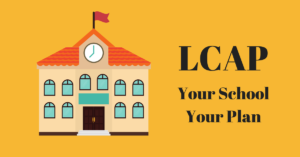California : California ELL Resources for LCAP

California schools were home to more than 2,360,744 English Language Learners (ELLs), as of the 2021 school year. Currently, there are five most common spoken languages by ELLs in California – Spanish, Tagalog, Chinese, Vietnamese, and Arabic.
State of California ELL Resources
State Agency: California Department of Education
ELL Website: English Learners in California
Laws & Regulations
ELL Guidance & Documents: ELL Forms Website
ELL Identification
Home Language Survey: The CDE English Learner Forms offers a sample home language survey and translations.
Placement Exam: California English Language Development Test (CELDT)
ELP Standards & Assessment
ELP Standards: English-language Development Standards
ELP Assessment: California English Language Development Test
English Language Arts Materials: CDE Website
Statewide Standards-Based Assessment
Assessment: California Assessment of Student Performance and Progress (CAASPP) System
Additional Information
Title III Information: Title III Information and Accountability
National Clearing House for English Language Acquisition (NCELA): Title III Information
Statewide Resources
Lectura Books
Lectura Books
Lectura Books is the go-to source for bilingual books and culturally relevant family reading programs.
The Latino Literacy Project
The Latino Family Literacy Project is known for its award-winning parent involvement programs for Spanish speaking parents.
California Association of Bilingual Education
The California Association for Bilingual Education (CABE) was founded in 1976 as a non-profit organization with the goal of promoting bilingual education and high-quality educational experiences and outcomes for students throughout California.
California: Seal of Biliteracy
In 2012, California was the pioneer to create and adopt the Seal of Biliteracy to promote bilingual pride. The Seal of Biliteracy encourages students to be biliterate and aid schools in promoting bilingualism by granting seals and medals. The organization has an award, which recognizes students who have studied and reached proficiency in two or more languages by the time they graduate high school.
Policy Analysis for California Education
Policy Analysis for California Education (PACE) is an independent research center that aspires to enrich education policy debates with hard evidence and through analysis. PACE is dedicated to assessing the effectiveness of programs and policies, as well as defining issues that affect students from preschool all the way up to higher education.
Partnering to Create a College-Going Culture: Resource Guide
This report was prepared as part of the Building Educational Success Through (BEST) Collaboration in Los Angeles County initiative. This report was created to serve as a resource for local educators trying to build and maintain partnerships geared toward cultivating a positive attitude towards going to college within their school community.
California and Nevada TESOL
CATESOL is the organization that represents teachers of ELLs throughout California and Nevada. This organization promotes excellence in education for ELLs and a professional environment for TESOL teachers.
California Healthy Kids Resource Center (CHRKC)
The California Healthy Kids Resource Center (CHRKC) curates a comprehensive collection of health education materials especially for professional who work with students from preschool through 12th grade.
California Teachers Association
The California Teachers Association is part of the National Education Association state affiliate program. This national program lobbies legislators for resources needed in schools. Additionally, they campaign for higher professional teacher standards and file legal actions to protect academic freedom and school employee rights.
Californians Together
Californians Together is a statewide coalition of teachers, education advocates, civil rights groups, and teachers. This organization is committed to securing equal access to high-quality education for all children, especially for ELLs.
Note: Regulations change from time to time. These resources and guidelines were complied in July 2018. If you see that something needs to be updated, please let us know! For more detailed information regarding ELL guidelines and policies at the state and federal levels, please refer to the following:
Federal Regulations Regarding English Language Learners (ELLs)
Migration Policy Institute: ELL Information Center
